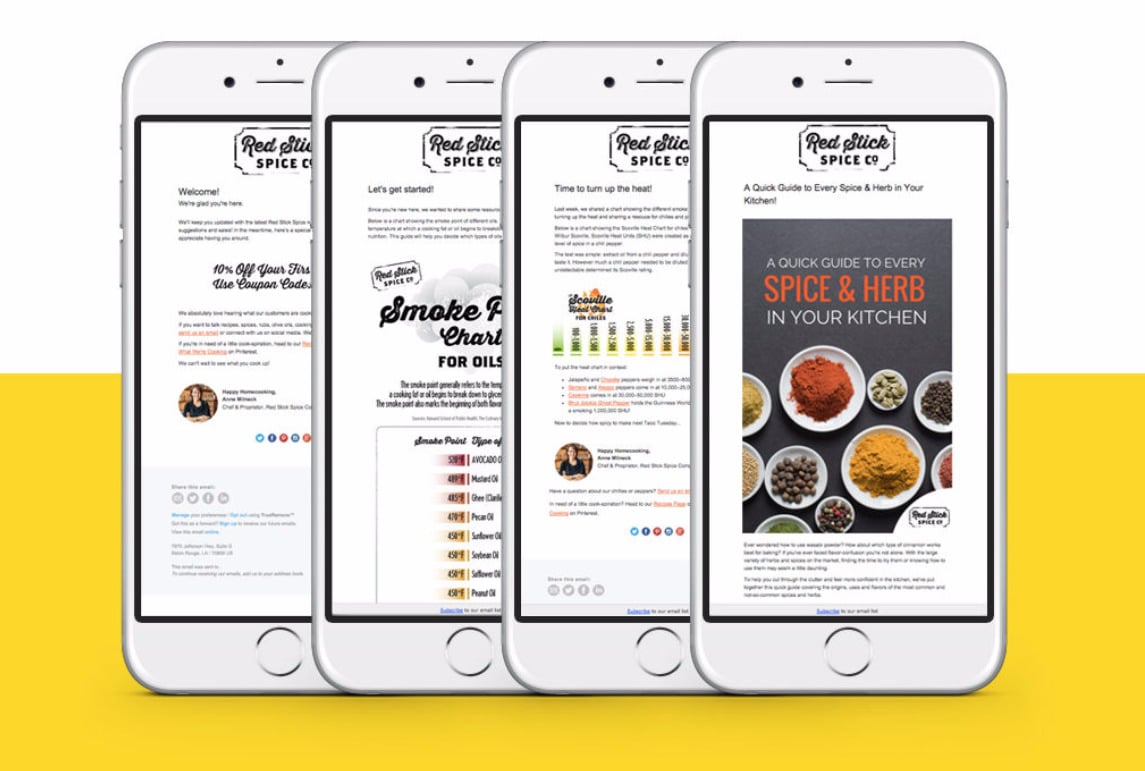Q&A from Let’s Get Personal

When it comes to designing emails for mobile devices, what are some basic best practices that you would recommend?

1. Stick with a simple, single-column layout and embrace the scroll!
2. Use large, readable fonts that are at least 16 px, and make sure all of your CTA buttons are big enough to be easily tapped (at least 44 px squared).
3. Rather than filling your messages to the brim with endless copy, use streamlined, eye-catching imagery. People respond well to visual stimulation, so oftentimes it’s better let your product speak for you.
Luckily for our customers, all of Emma's templates are already mobile-optimized! But if you'd like to learn more about how to make your emails look top-notch on mobile devices, check out our mobile guide.
I get the importance of the “mobile experience,” but one problem: Our website is NOT mobile friendly. What can I do?
Do everything you possibly can to convince your web guys to make it so!
But no, in reality, there are some ways to get around the problem of not having a mobile-optimized website. Even if your site isn’t mobile friendly, always be sure to give your email subscribers a good mobile experience by linking to other places that ARE mobile friendly: YouTube, your social channels, or a blog hosted on a site that’s already inherently mobile friendly (like Uberflip, which is what we use).
Also, you can find an online form builder like Formstack or Survey Monkey to use if you’re asking your subscribers for information. Or a service like LeadPages to create mobile-friendly landing pages. You can also create and link to the web-hosted version of an email. Moral of the story: It’s not an ideal problem to deal with, but there are plenty of ways you can work around it.
What are the best times to send email?
Unfortunately, there's no one perfect time when all emails get opened. Believe me, we've checked. It really depends on your brand and your audience, but a general rule is to listen to your subscribers. It's about testing and going through the trial-and-error process until you find the time that gets the best results.
Also, look at your industry: Where are your recipients likely to be? What are they likely to be doing (or not doing) in comparison to what you’re asking them to do? If you’re B2B, it makes sense to send during work hours if you’re asking me to do something work-related. If you’re in retail or leisure, you might find your response numbers look best on the weekends or during the evening.
You used a lot of retail examples, but I’m a B2B brand. What are some good data points to use when it comes to segmenting my audience?
I touched on this a little bit during the webinar, but it was such a popular question that I thought I’d dive a little deeper.
Retail is usually on the forefront of most marketing trends because, by and large, retailers are working in a crazy-crowded space filled with the shiniest assets (great photography, a lighter brand voice, etc.). However, as a B2B brand, you probably have access to way more concrete information about your audience based on how they find you.
For instance, you probably have a sales or support team that's logging data based on their conversations, cases and so on. You also probably have more opportunities to track meaningful website data that’ll deliver so much more helpful information than just how many times a site visitor clicked on a particular shirt. If a new site visitor comes from an ad that was aimed squarely at creative agencies and goes crazy for your white papers covering a specific topic, then you know that that person should get more of that kind of content.
And even if you don’t have data that sophisticated, you can always monitor what content pieces perform especially well and start serving it to everyone on your list. You can serve more of that type of content to the individuals who respond well to it and try sending something different to those who don’t. Continue testing until you’ve identified which type of content appeals to each segment of your audience.
What’s a good template to follow for an automated welcome email series?
I talked a little bit about the power of the welcome email during the webinar, but if one email doesn’t feel like enough to get your relationship off on the right foot, it’s a great idea to automate an entire welcome series! The content of the series will vary from brand to brand, but yours could look something like this:
• Email 1: Thanks for signing up and brand introduction.
• Email 2: Exclusive piece of helpful content.
• Email 3: Case study of a customer having success with your brand.
• Email 4: Special offer with a call to action to buy.
MOST RECENT ARTICLES
Want to engage your audience and grow your brand? Try Emma's robust easy-to-use product today.












